When you’re shopping for chicken at the grocery store or reading a recipe, you might get confused by all the different terms used for chicken cuts. One common question that many home cooks have is whether chicken fillets are boneless Let me clear this up for you once and for all!
The Short Answer: Yes, Chicken Fillets Are Always Boneless
If you’re in a hurry and just need the quick answer – chicken fillets are always boneless. This is one of their defining characteristics and what separates them from some other chicken cuts. But there’s more to understand about chicken fillets if you want to become a better cook!
Understanding Chicken Fillets vs. Chicken Breasts
Let’s break down the difference between these two common chicken cuts
What is a Chicken Breast?
A chicken breast refers to the pectoral muscle of the chicken These paired muscles make up the bulk of the chicken’s breast area, Chicken breasts are one of the leanest parts of the chicken with minimal fat,
There are two main types of chicken breasts you might encounter:
- Bone-in chicken breasts – These include the breastbone and often some rib meat and skin
- Boneless, skinless chicken breasts – The most common type where both bones and skin have been removed
Chicken breasts are versatile for cooking and can be prepared using almost any method – grilling, baking, sautéing, or poaching. They have a mild flavor that works well with marinades and spices.
What is a Chicken Fillet?
Here’s where some confusion happens. Chicken fillets (sometimes called chicken tenderloins) are actually a specific part of the chicken breast. They’re the small, tender strips of meat that are attached to the underside of the chicken breast, running alongside the breastbone.
The key characteristics of chicken fillets include:
- Always boneless – Fillets are trimmed away from the bone
- More tender texture – They’re less worked muscles than the main breast
- Thinner and smaller – They have a distinctive long, narrow shape
- Quick cooking – Their thin shape means they cook faster than breasts
- Mild flavor – Like breasts, they take on spices and marinades well
Main Differences Between Chicken Breasts and Fillets
To summarize the key differences:
| Feature | Chicken Breast | Chicken Fillet |
|---|---|---|
| Bones | Can be bone-in or boneless | Always boneless |
| Size & shape | Large, thick cuts | Long, thin, and smaller |
| Muscle use | From frequently used pectoral muscle | From tenderloin, less worked |
| Cooking time | Longer cook time | Cooks faster |
| Price | Usually cheaper per pound | Slightly more expensive |
| Texture | Firm, meaty texture | More tender, delicate texture |
It’s important to note that while they have similar mild flavors, the differences in size, thickness, and texture mean that fillets and breasts aren’t always interchangeable in recipes.
How to Buy Quality Chicken Breasts and Fillets
When you’re at the store looking for chicken breasts or fillets, here’s what to look for:
- Color – Raw chicken should be pale pink to white without discoloration
- Freshness – Check the packaging date and get the freshest available
- Texture – The meat should feel firm and smooth, not sticky or tacky
- Smell – Raw chicken should have very little odor (avoid strong smells)
- Packaging – Make sure it’s cold and packaged securely with no leaks
For food safety, remember to cook or freeze chicken within 2 days of purchasing. When stored properly, chicken can last up to a year in the freezer.
Cooking Tips for Chicken Fillets
Since chicken fillets are always boneless, they’re super easy to work with! Here are some tips for preparing them:
- Quick rinse – Give them a quick rinse under cool water before cooking and pat dry
- Trim if needed – Remove any excess fat or sinew with a sharp knife
- Marinate – Their tender texture absorbs flavors well, so even a short 30-minute marinade helps
- Don’t overcook – Cook just until they reach 165°F internally
- Rest – Let them rest 5 minutes after cooking so juices redistribute
Because fillets are thin and cook quickly, they’re perfect for:
- Stir-fries
- Quick grilling
- Sandwiches and wraps
- Kid-friendly meals (they’re super tender)
- Skewers and kabobs
FAQs About Chicken Fillets
Are chicken fillets and chicken tenders the same thing?
They come from the same area of the breast, but there are subtle differences. Chicken tenders tend to be longer and thinner, with tendons running through them. Fillets usually have a more rounded, triangular shape.
Can I substitute chicken fillets for breasts in recipes?
It’s not really recommended. The difference in size and thickness would likely result in overcooking or undercooking. It’s best to use fillets only when a recipe specifically calls for them.
What’s the healthiest way to cook chicken fillets?
The healthiest methods are baking, grilling, or pan-searing until just cooked through. Avoid deep frying or heavy breading to keep them lower in fat and calories.
How long do raw chicken fillets last in the fridge?
Raw chicken stored at 40°F or below will keep for about 2 days in the fridge. For longer storage, freeze them for up to a year.
How can I tell when chicken fillets are done cooking?
Chicken fillets are fully cooked when they reach an internal temperature of 165°F. The meat will become opaque and white throughout with no pink showing. Juices will run clear when pierced with a fork.
My Personal Experience with Chicken Fillets
I’ve been cooking with chicken fillets for years, and I find them super convenient for weeknight meals. Their boneless nature makes them so easy to work with! I particularly love them for stir-fries because they cook so quickly and stay tender.
One thing I’ve noticed is that my kids prefer fillets over breasts because of how tender they are. Plus, the smaller size makes them less intimidating on a plate for little ones.
If I’m feeling fancy, I’ll sometimes stuff chicken fillets with herbs and cheese, roll them up, and secure with toothpicks before baking. Since they’re always boneless, this is super easy to do!
Final Thoughts
So there you have it – chicken fillets are definitely boneless! They’re a versatile, tender cut that cooks quickly and works well in many recipes. Next time you’re at the grocery store, you can confidently pick up chicken fillets knowing exactly what you’re getting.
While chicken breasts and fillets both have their place in cooking, understanding their differences helps you choose the right cut for your particular recipe. The boneless nature of fillets makes them particularly convenient for quick meals when you’re short on time.
What’s your favorite way to cook chicken fillets? Do you prefer them over chicken breasts? I’d love to hear your thoughts and experiences!

Ingredients you will need
Below is a list of ingredients you will need to make this sheet pan chicken. Full measurements are listed further down in the recipe card.
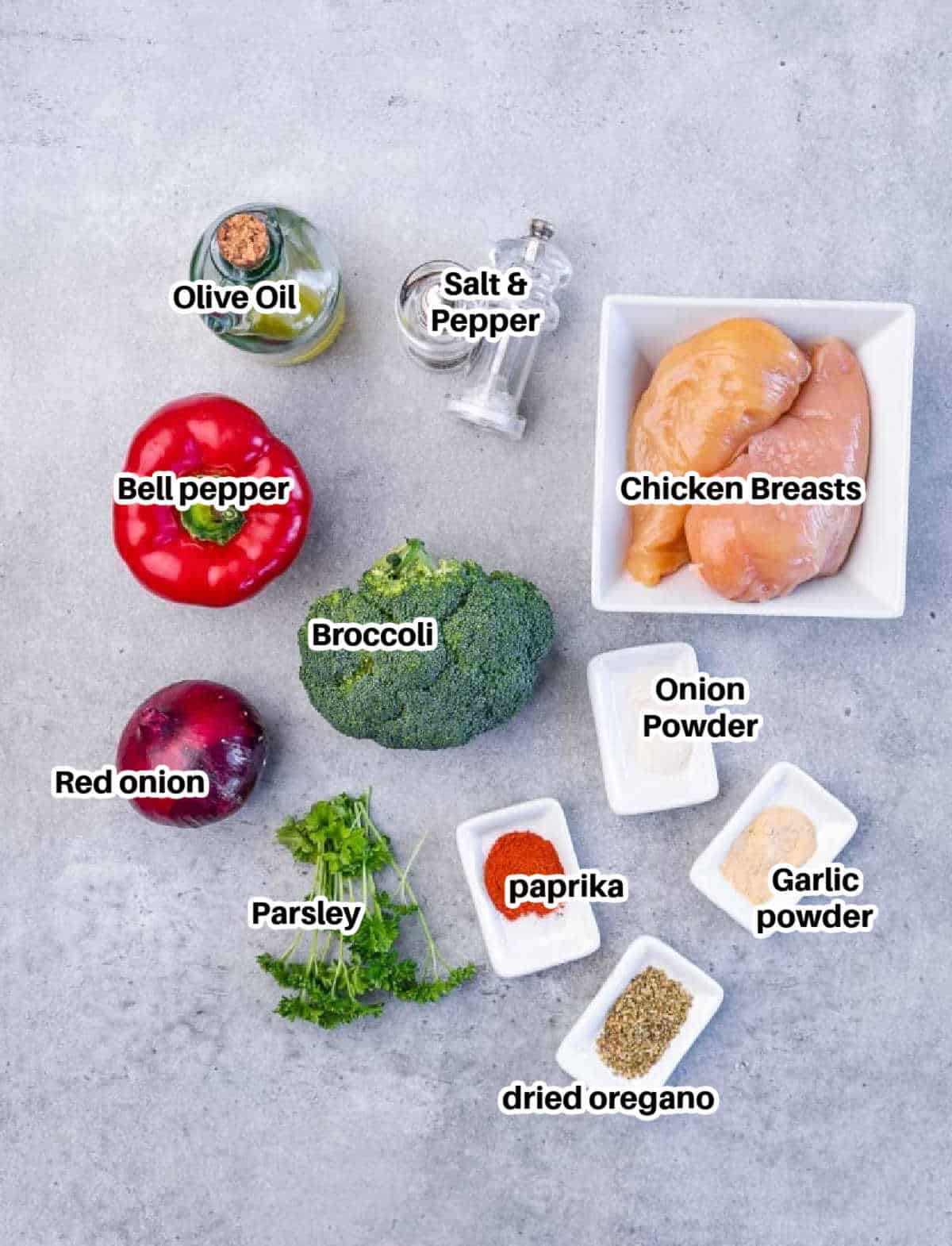
- Chicken Breast: Use boneless, skinless chicken breasts (about 2 medium-large breasts). If you prefer chicken thighs, you may use chicken thighs.
- Seasonings: paprika, garlic powder, dried oregano, onion powder, salt, and pepper.
- Oil: I used olive oil, but you may use any other oil of choice.
- Broccoli: usee fresh broccoli, or you may use frozen.
- Red bell peppers: if you have any of the other colors, you can use them instead.
- Onion: I used red/purple onion. Use any onion of choice
- Minced parsley
How to make chicken sheet pan dinner
Preheat your oven to 400F and line a large baking sheet with parchment paper.
Lay the chicken breast on the prepared pan and rub with the seasonings and half a tablespoon of olive oil.
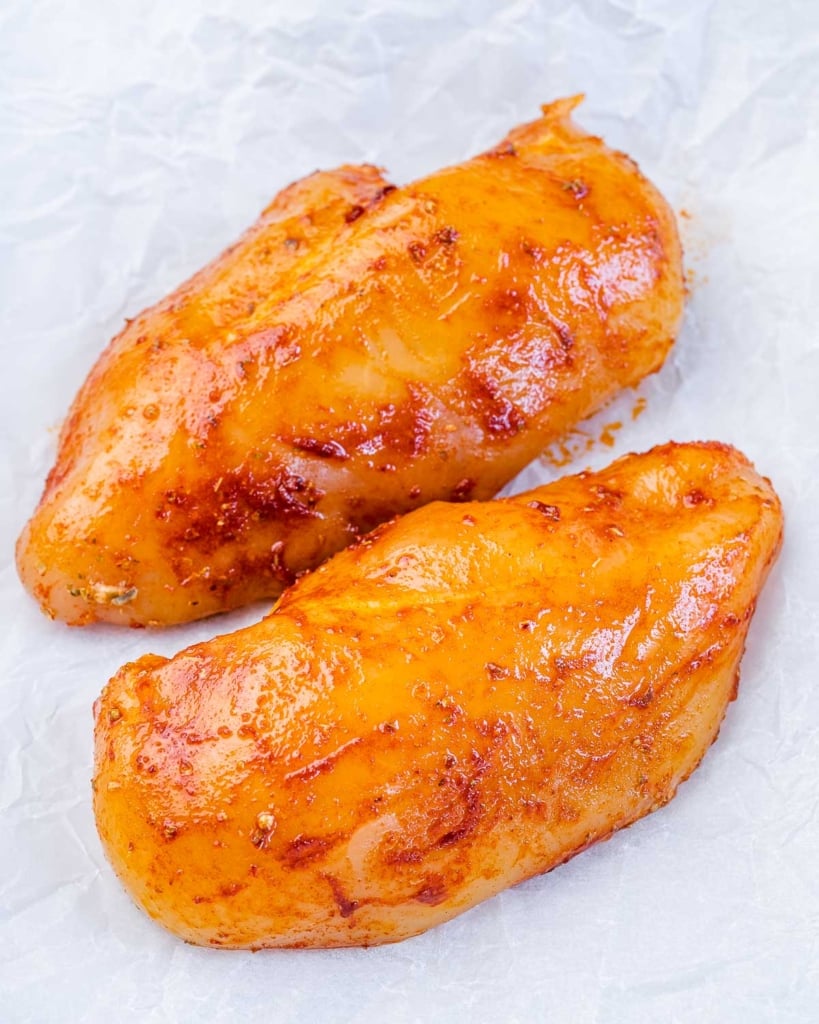
In a large bowl, combine all the prepped veggies. Drizzle with the remaining tablespoon of oil. Season with salt and pepper and thoroughly toss to coat.
Arrange the vegetables around the chicken in the sheet pan.
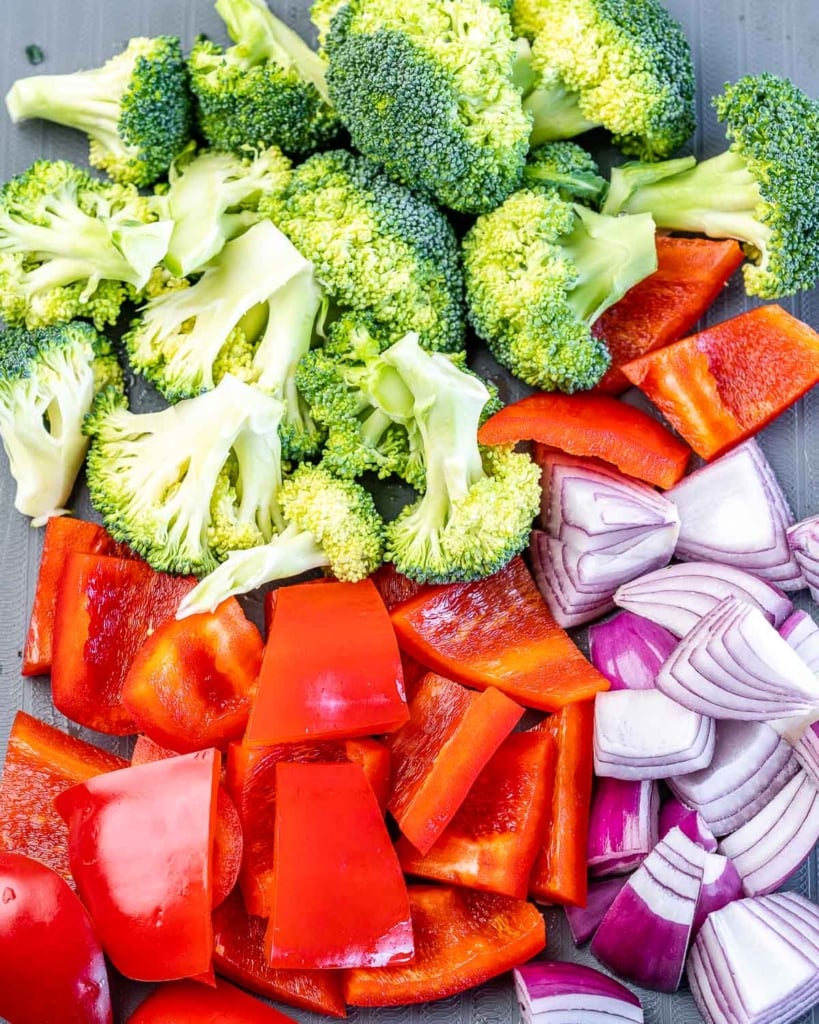
Bake for 20-25 minutes, or until the chicken is no longer pink on the inside, and veggies are tender with a slight crunch. Allow the chicken to sit for a few minutes before slicing it.
Garnish with chopped parsley.
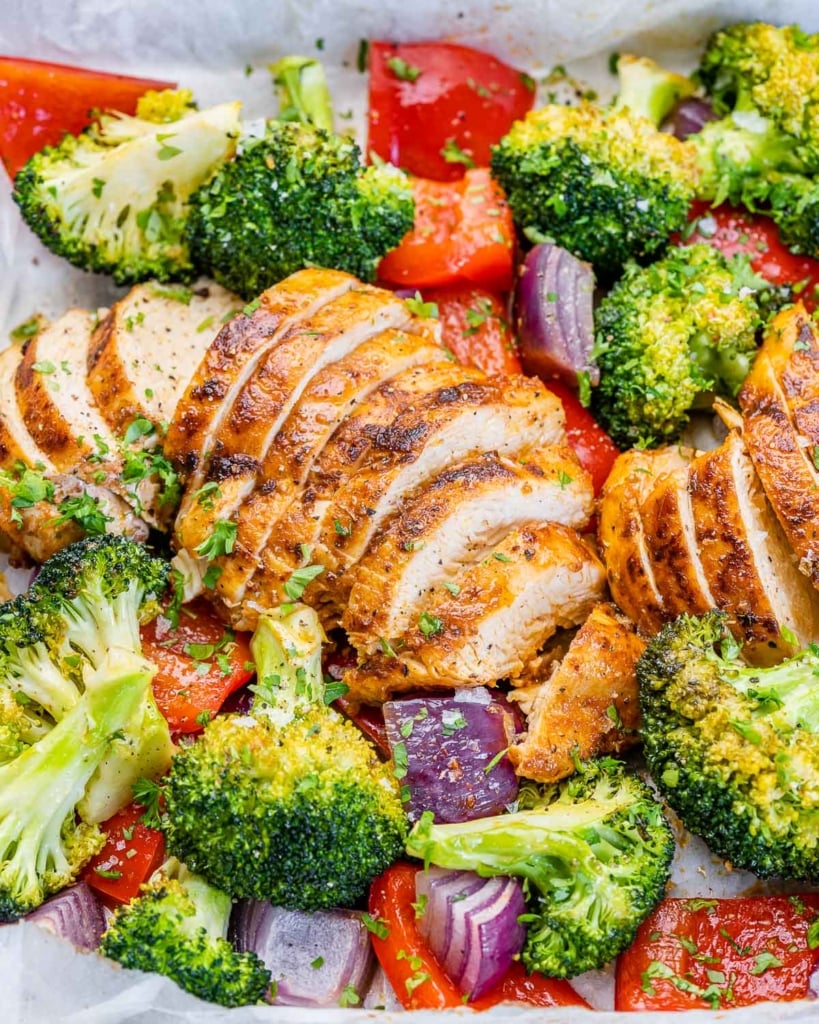
It all depends on what you are baking. The temperature will vary based on what you are using like thighs or breasts, bone-in or boneless. Ideally, chicken is baked anywhere between 350F-450F for a period of at least 20 minutes and up to 45 minutes. The best way to check if the chicken is done and cooked through is to check the internal temperature until it reaches 165F.
No. I prefer not to cover it as it bakes. You want it to be browned and have that roasted look as opposed to boiled or steamed chicken. Leave it uncovered.
Do not overcook it! Simple as that. If you cook the chicken for too long over the recommended time, the heat will remove the moisture from the chicken thus drying it out.
You can swap the chicken with shrimp or salmon. If using shrimp or salmon, you may need to bake them for about 18-20 minutes.
If you have leftovers, you can store them in the fridge for up to 4 days or freeze for up to 3 months.

Pin this now to find it later
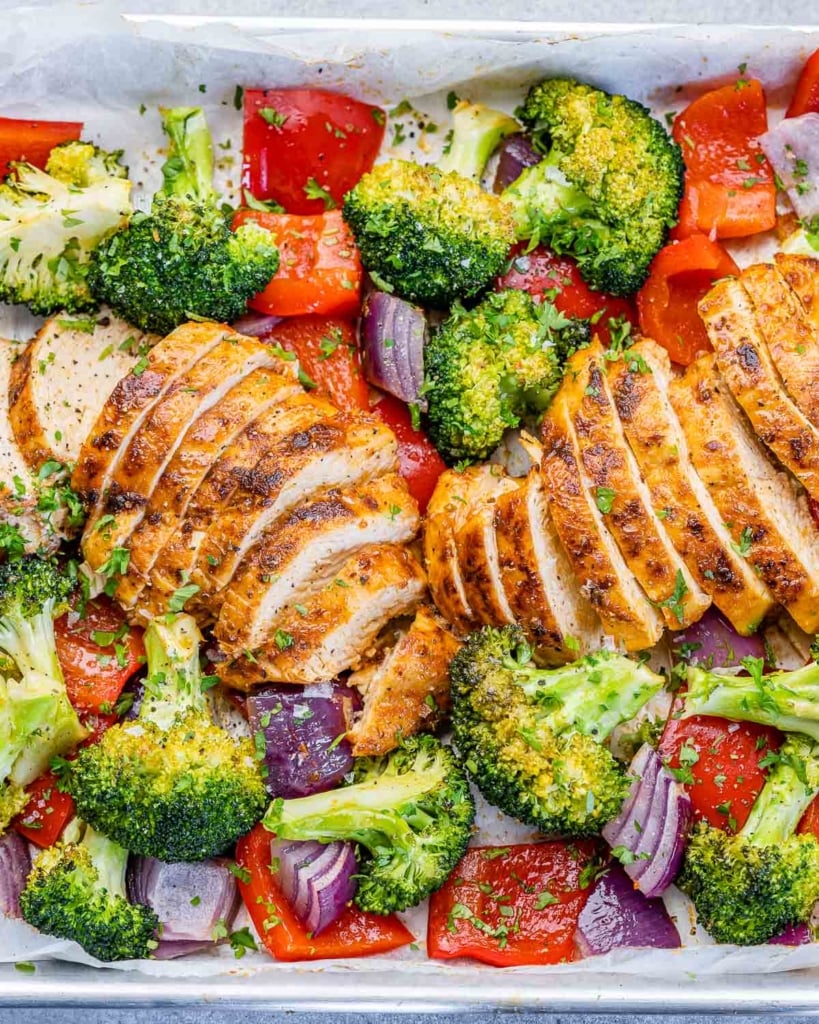
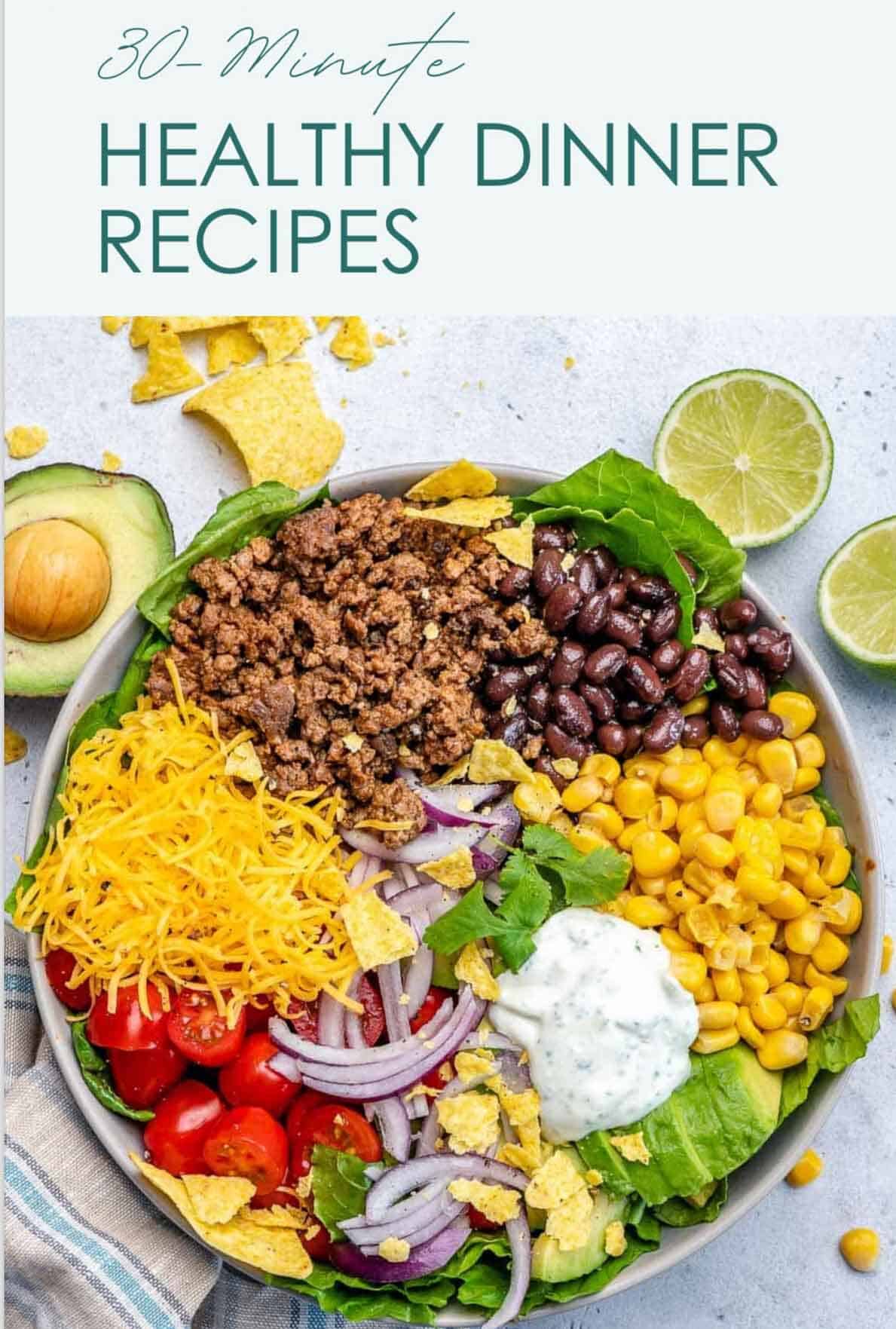
If you try a recipe and you like it, leave me some feedback in the comment section below, and don’t forget to rate it! I would love it if you shared it with friends and family.
FOLLOW me on FACEBOOK | INSTAGRAM | PINTEREST | TWITTER for all of my latest blog posts and recipes.
